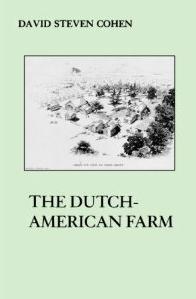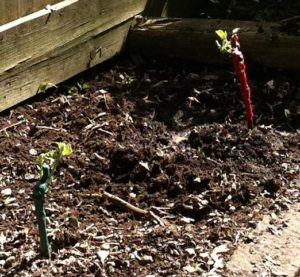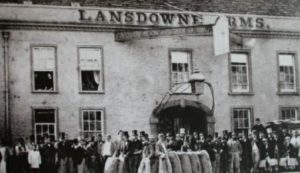 It has been a bit part of the puzzle for me. As I have mentioned before, Craig as taken more of an interest in Albany Ale as reflected in the 1800s industrial period where I am more interested in the pre-1800s experience. The weird thing has been that not only do the two eras reflect issues of scale but there is that back of the brain niggling question about how, prior to a certain point right around that date, they seem to shift from using wheat malt to barley malt as the base grain. I sense Craig may be less firm than me on this. He may think I am off on a tangent. Which might be right. I think I live at the tangent most days and I trust Craig’s opinion – especially as he actually works in the world of fact at the New York State Museum where I live in the world of rhetoric as a lawyer. But I persist and, pursuing that question, ordered a copy of The Dutch American Farm by D.S. Cohen to see if I could find anything that might help me. I think I might have.
It has been a bit part of the puzzle for me. As I have mentioned before, Craig as taken more of an interest in Albany Ale as reflected in the 1800s industrial period where I am more interested in the pre-1800s experience. The weird thing has been that not only do the two eras reflect issues of scale but there is that back of the brain niggling question about how, prior to a certain point right around that date, they seem to shift from using wheat malt to barley malt as the base grain. I sense Craig may be less firm than me on this. He may think I am off on a tangent. Which might be right. I think I live at the tangent most days and I trust Craig’s opinion – especially as he actually works in the world of fact at the New York State Museum where I live in the world of rhetoric as a lawyer. But I persist and, pursuing that question, ordered a copy of The Dutch American Farm by D.S. Cohen to see if I could find anything that might help me. I think I might have.
To review, Albany is the capital of New York State. Craig lives there. One of the oldest cities in the US, it is an inland port that was settled by the Dutch in the first half of the 1600s as a fur trading centre. It sits where the Mohawk River, the eastern section of the Erie Canal, empties from west to east into the north to south running Hudson River, a couple of hours drive north of the city of New York, which itself sits at the mouth of the Hudson. As a Dutch settlement distant from other colonial settlements and, from the 1660 to the 1780, being culturally isolated from the British American experience around it, Albany took its own path for a significant period of time. Cohen states:
It is debatable, however, whether a colony in which the Dutch Reformed Church was the established church and the only religion that could be worshipped in public, in which there were large, tenanted patroonships and a company monopoly on the fur trade, and in which there was slavery, could be described as either tolerant or democratic.
As part of this singular colonial economy, Cohen describes the role wheat played in pre-1800s Albany and vicinity and includes that passage from mid-1700s traveler Swedish professor Peter Kalm that I posted earlier describing the malting of wheat as well as the volume of production. Wheat was a cash crop that was shipped south to New York city as early as 1680. Barley along with oats and rye were planted at no where near the volume of wheat. Yet wheat collapses as a Hudson Valley crop in the first half of the 1800s. In part this is due to the Hessian fly that was introduced to New York during the Revolution: “[t]he insect had apparently hitched a ride from Europe with some Hessian mercenaries employed as soldiers by the British, hence its name. First noticed in straw used at a military encampment on Long Island, the fly slowly extended its range, endangering the continent’s wheat fields for many years.”
So, there was change from pre-Revolutionary hinterland bubble of Dutch culture to post-Revolutionary national American project. And there was the transportation change from Albany as edge of Empire before the war to being just the left turn to the west after the building of the Erie Canal in the 1820s. But on top of that there was a pest that struck at wheat just as the records indicate that Albany brewers moved from making strong wheat beer in the old Dutch style to making barley based Albany Ale which was exported widely through the 1800s. Combined, all these factors explain the shift from one sort of beer to another. Which leads to the next problem of what each of them tasted like.

 Bok Choi is now my favorite garden crop. I had no idea it grew this quickly. While we still wait for lettuces to get to a point where thinnings could be added to a salad, the bok choi is ten times the size. Peas are flowering. I need more carrot seed. More space, too. I want to dig up the lawn and ram potatoes in its place.
Bok Choi is now my favorite garden crop. I had no idea it grew this quickly. While we still wait for lettuces to get to a point where thinnings could be added to a salad, the bok choi is ten times the size. Peas are flowering. I need more carrot seed. More space, too. I want to dig up the lawn and ram potatoes in its place.